Notable Natives: Summer Phlox
Notable Natives: Summer Phlox
Why Phlox paniculata belongs in Cape Cod gardens
When it comes to perennial plants that check several boxes, summer phlox excels. The fragrant flowers that are good for cutting, and are attractive to hummingbirds and butterflies. Depending on the variety, Phlox paniculata can be in flower between July and September, and is a reliable plant for perennial gardens. It is native from New York down through Arkansas, and in addition to the species and nature-made varieties, many cultivars have been selected that are shorter or more disease resistant.
Summer phlox comes in a variety of colors in the pink, lavender, and white range. There are short, repeat flowering varieties available such as the Volcano Phlox series. In general, plant these native plants in gardens that get at least 5 hours of direct sun including the noon hour. They grow nicely in Cape Cod’s well drained soils. Amend annually with a layer of compost before planting, and top-dress around the plants with mulch, compost or chopped up leaves.
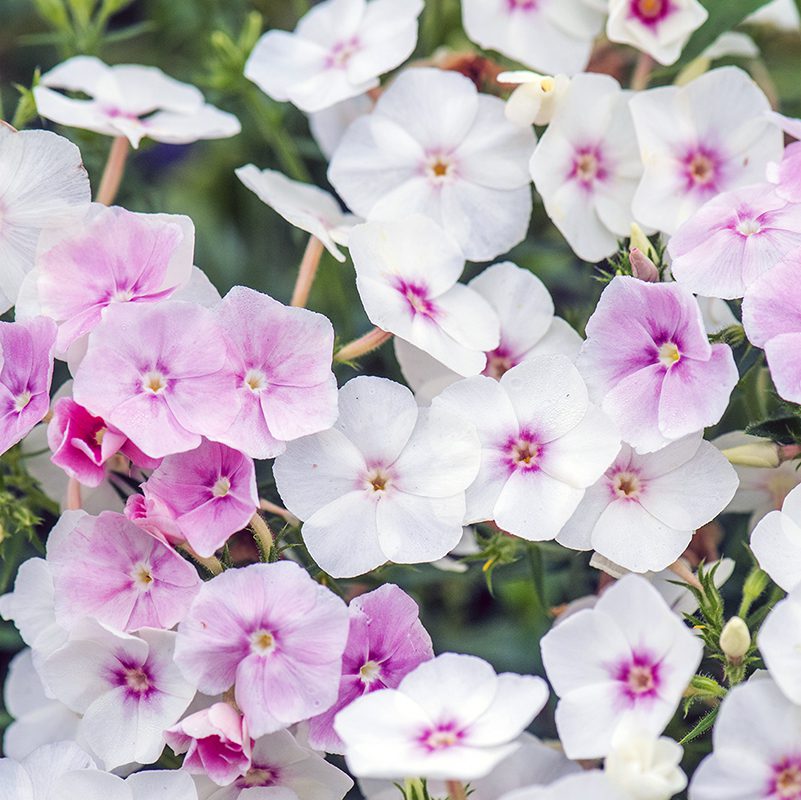
The perennial plant for the year for 2024
The members of the Perennial Plant Association voted Phlox paniculata ‘Jeana’ to be their choice for the Perennial Plant of the Year in 2024. This plant was found by Jeana Prewitt growing wild along the Harpeth River near Nashville, Tennessee. It differs from many named phlox cultivars in that it’s taller, mildew-free, and has smaller flowers. Those smaller blooms make it ideal for cutting gardens and use in bouquets. Phlox ‘Jeana’ is also a valuable perennial in that it thrives in part-shade. Those who only have a couple of hours of sunlight can grow this phlox successfully and enjoy the butterflies that it attracts.
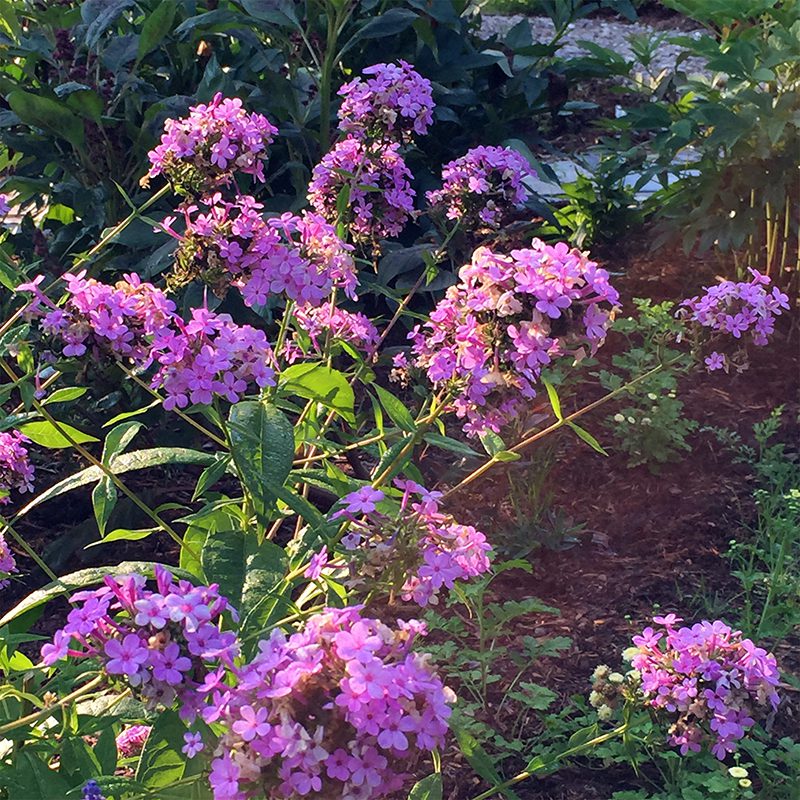
Butterfly Gardens
Phlox paniculata is a great native plant for butterfly gardens. Combine it with butterfly weed (Asclepias tuberosa), Stoke’s aster (Stokesia laevis), blazing star (Liatris spicata), and golden rod (Solidago species) for a summer border that’s beautiful and supports butterflies, bees and birds.
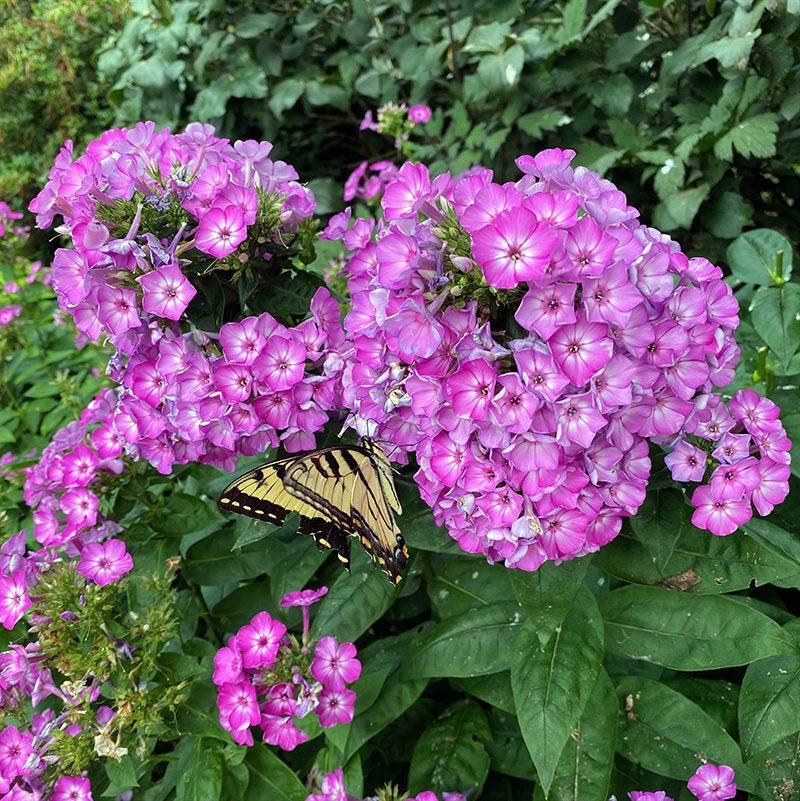
Phlox in cutting gardens
If picking bouquets of garden flowers brings you joy, plant a few summer phlox plants in the colors that make you happy. For the longest lasting display, cut flowers early in the morning just as they have begun to bloom. Some of the blue shades of phlox turn more magenta-pink once the sun hits them, so if you want the bluer color, cut them early in the day.
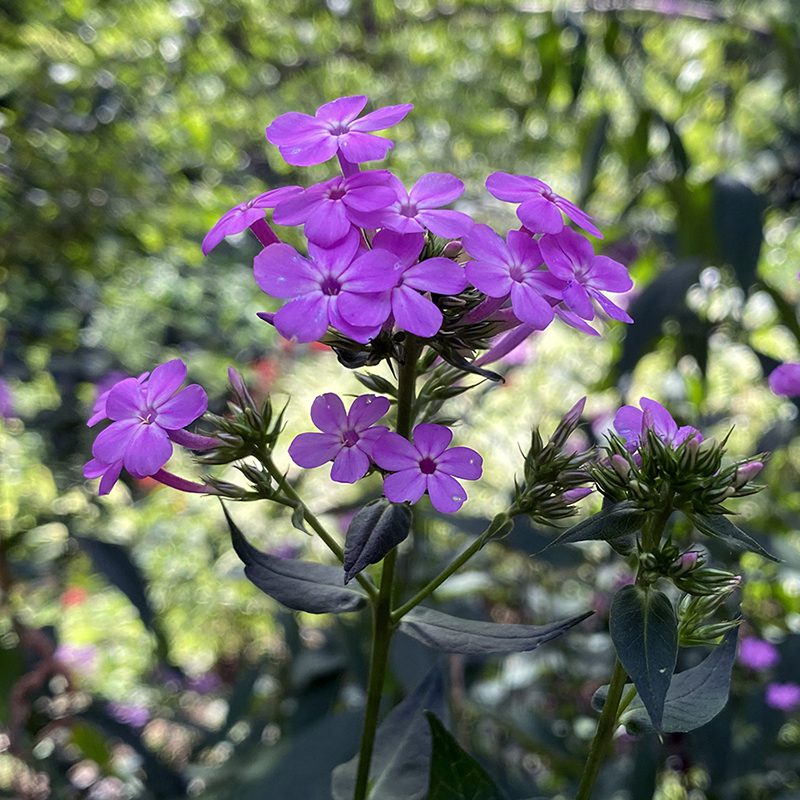
Phlox and powdery mildew
The one disease that Phlox gets is powdery mildew. Some varieties, such as ‘Jeana’ and the white-flowering ‘David’ are very resistant to this leaf fungus. Powdery mildew is worse in summers when the humidity is high but the rainfall is low; in dry weather the plants are stressed and more prone to the disease, but when it periodically rains the spores are washed off the leaves, keeping the mildew in control. Gardeners needn’t worry too much about powdery mildew on Phlox, however, because it’s a cosmetic problem only. PM never kills the plants. In a year when the mildew is bad, cutting the stems to the ground in August, or stripping off their leaves, solves the problem. (Note: put any PM infected foliage or stems in a brush pile, not in your compost.)
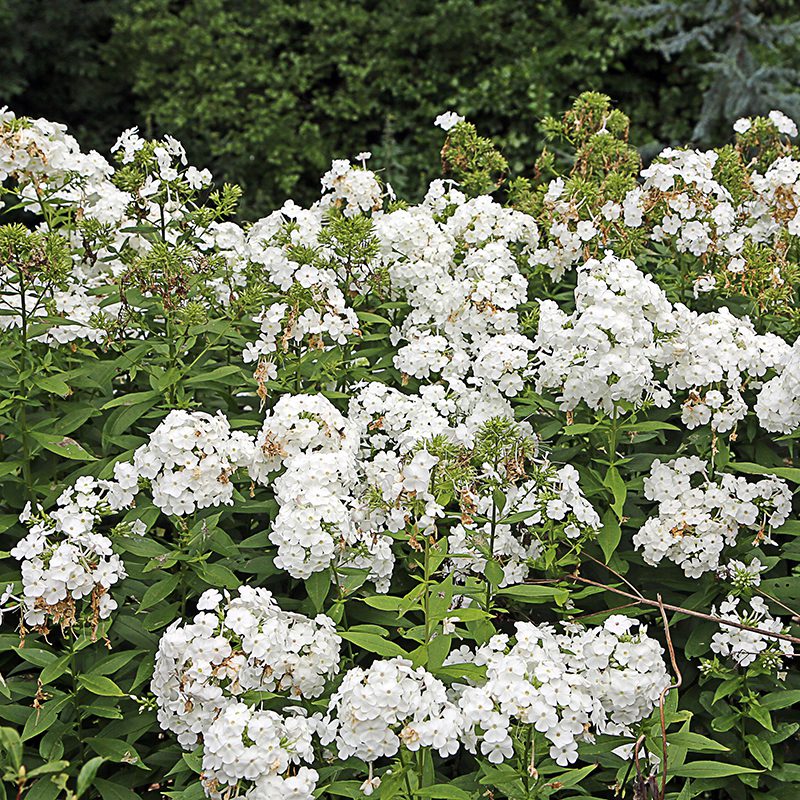
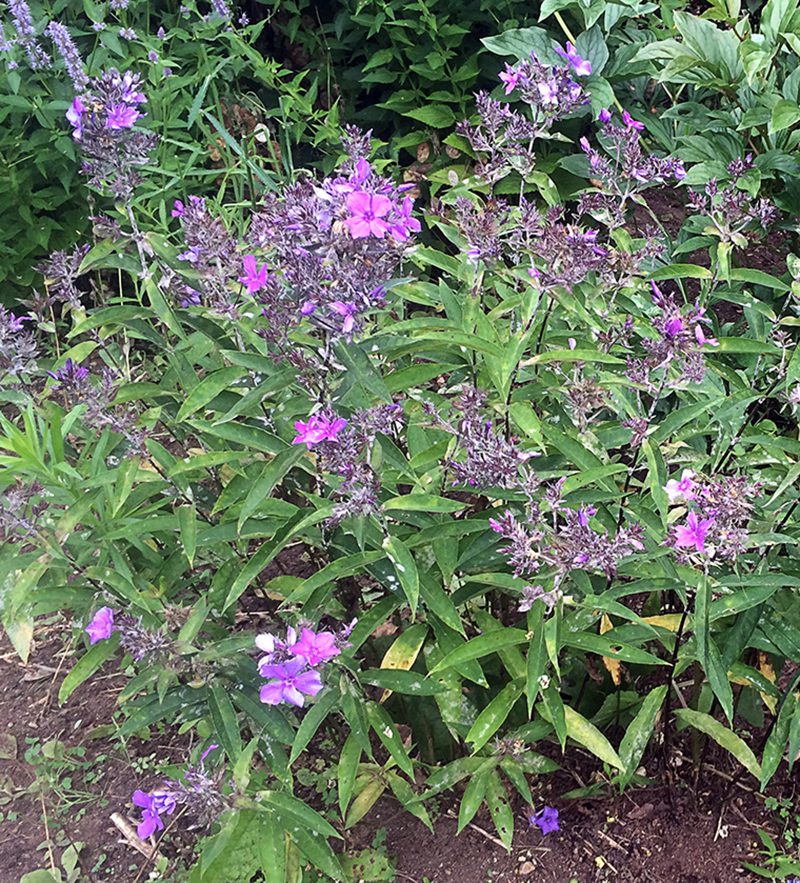
1 Comment
Leave a Comment
Subscribe To Our Newsletter
Sign up for our weekly email about sales and events.

Love my Jeana phlox plants. I was going to replace the other mildew prone phlox with it but they grow fine side by side and I treat the mildew ones as needed by stripping or pruning.